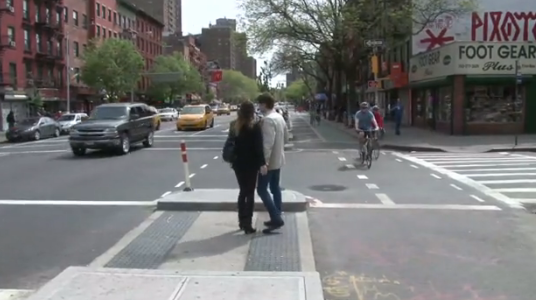Something has been lost in the recent kerfuffle over bike lanes in New York City. The rethinking and redesign of the city’s streets is not just about bikes (and it is not a terrorist plot). It’s about what is known in the land of urban wonkery as “complete streets,” and it is a concept that is becoming more and more prevalent around the country.
Here’s how the National Complete Streets Coalition defines what it means to build a complete street:
Instituting a complete streets policy ensures that transportation planners and engineers consistently design and operate the entire roadway with all users in mind — including bicyclists, public transportation vehicles and riders, and pedestrians of all ages and abilities.
In other words, a complete street is one that an older person with a walker, or a person in a wheelchair, or a parent pushing a stroller, can cross without fear.
It’s a street on which public transportation has a designated and respected place.
It’s a street with space for trees and flowers.
And yes, it is a street that has accommodations for bicycles — the dreaded “bike lanes.”
What does that look like in action? Take a look at this video from Streetfilms showing the transformation of several New York streets, including Columbus Avenue on the Upper West Side and First and Second Avenues on the East Side. It explains the whole idea a lot better than a thousand wonky words.




